AMD Ryzen 5 3600 Review: Why Is This Amazon's Best Selling CPU?
by Dr. Ian Cutress on May 18, 2020 9:00 AM ESTTurbo, Power, and Latency
Turbo
As part of our usual test suite, we run a set of code designed to measure the time taken for the processor to ramp up in frequency. Recently both AMD and Intel are promoting features new to their processors about how quickly they can go from an active idle state into a turbo state – where previously we were talking about significant fractions of a second, we are now down to milliseconds or individual frames. Managing how quickly the processor fires up to a turbo frequency is also down to the silicon design, with sufficient frequency domains needing to be initialized up without causing any localised voltage or power issues. Part of this is also down to the OEM implantation of how the system responds to requests for high performance.
Our Ryzen 5 3600 jumped up from a 2.2 GHz high-performance idle all the way to 4.2 GHz in 16 milliseconds, which coincides exactly with a single frame on a 60 Hz display. This is right about where machines need to be in order to remain effective for a good user experience, assuming the rest of the system is up to scratch.
Power
With the Ryzen 5 3600, AMD lists the official TDP of the processor as 65 W. AMD also runs a feature called Package Power Tracking, or PPT, which allows the processor to turbo where possible to a new power value – for 65 W processors that new value is 88 W. This takes into account the power delivery capabilities of the motherboard, as well as the thermal environment. The processor can then manage exactly what frequency to give to the system in 25 MHz increments.
As part of my new test suite, we have a CPU power wrapper across several benchmarks to see the power response for a variety of different workloads.
For an AVX workload, y-Cruncher is somewhat periodic in its power use due to the way the calculation runs, but we see an almost constant 90 W peak power consumption through the whole test. The all-core turbo frequency here was in the 3875-3925 MHz range.
Our 3DPMavx test implements the highest version of AVX it can, for a series of six 10 second on, 10 second off tests, which then repeats. In this case we don’t see the processor going above 75 W in the whole process.
Photoscan is our more ‘regular’ test here, comprising of four stages each changing between single thread, multithread, and variable thread. We see peaks here up to 80 W, but the big variable threaded scenario bounces more around the 60 W mark for over 1000 seconds.
On the per-core power side, using our ray tracing power load, we see a small range of peak power values
When one thread is active, it sits at 12.8 W, but as we ramp up the cores, we get to 11.2 W per core. The non-core part of the processor, such as the IO chip, the DRAM channels and the PCIe lanes, even at idle still consume around 12-18 W in the system.
Latency
Our latency test is a simple core-to-core ping test, to detect any irregularities in the core design.
The results here are as expected.
- 7.5 nanoseconds for threads within a core
- 34 nanoseconds for cores within a CCX
- 87-91 nanoseconds between cores in different CCXes


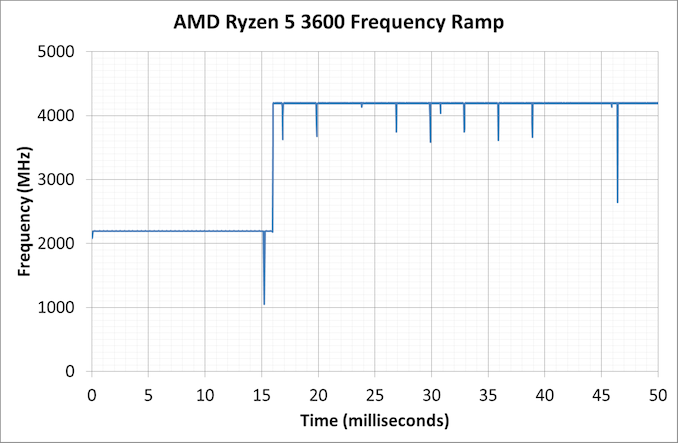
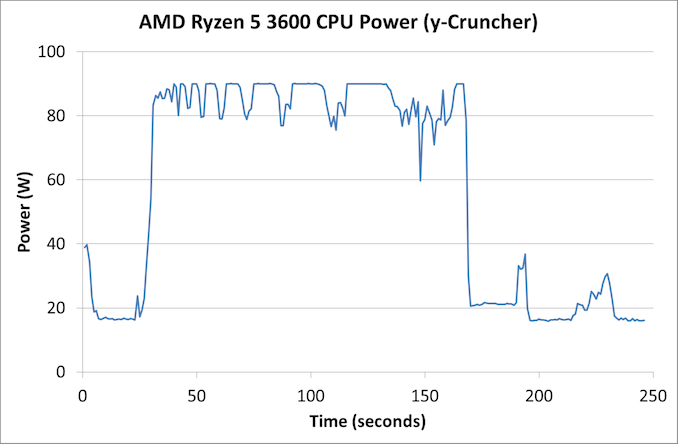
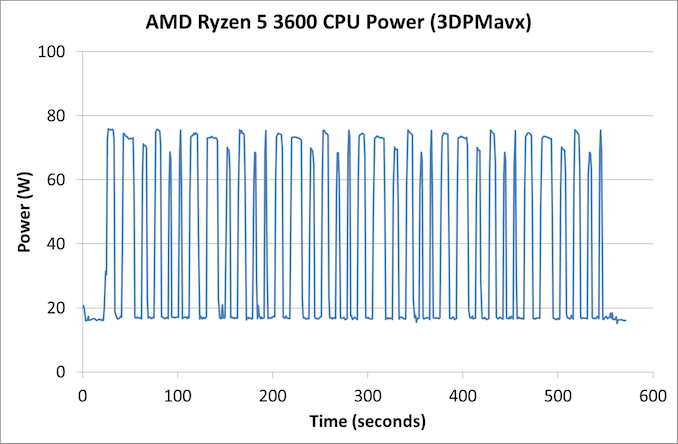
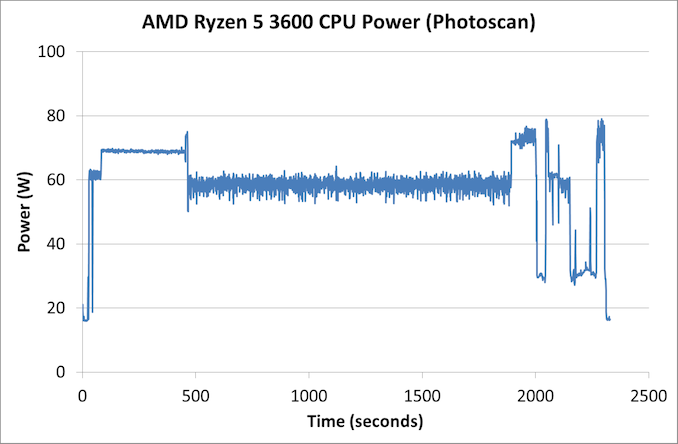
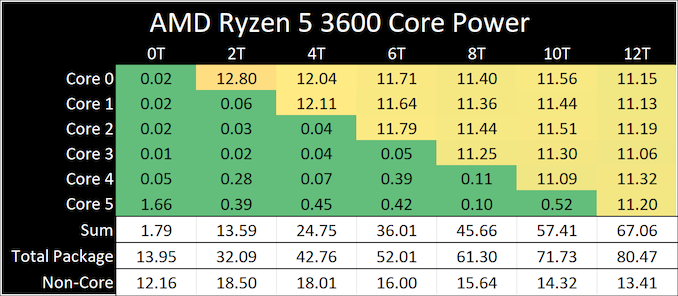
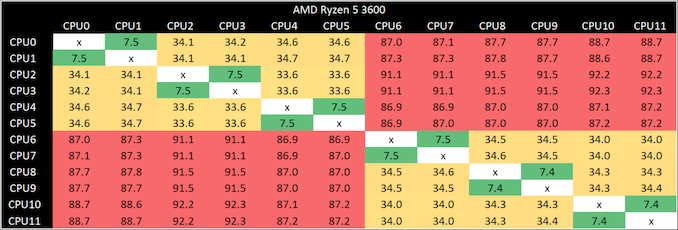








114 Comments
View All Comments
flyingpants265 - Monday, May 18, 2020 - link
Haha, I knew somebody would would be slow enough to say that.Spunjji - Tuesday, May 19, 2020 - link
Why are so many people who make terrible points under the impression that it's their critics who are slow?dromoxen - Thursday, May 28, 2020 - link
perhaps the slow one is the Flying trousers .. You have already paid out 100 so to upgrade you would need to spend an extra 290 cadshabby - Monday, May 18, 2020 - link
I paid 10k for a used corvette, who in their right mind would pay 60k for a new one...flyingpants265 - Monday, May 18, 2020 - link
I guess nobody, if the only advantage is a 15% performance increase. Thanks for proving my point!Spunjji - Tuesday, May 19, 2020 - link
😴lmcd - Wednesday, May 27, 2020 - link
Someone had to buy the original for there to be a used oneIf no one buys the original, there will be no used ones for you to buy
dudedud - Monday, May 18, 2020 - link
Why does the ryzen 3 3300X scores so high in DigiCortex even with half the cores of the 3700X?Or is a typo?
GreenReaper - Monday, May 18, 2020 - link
Probably because the interaction between the cores matters, and the 3700X has cores on two separate complexes.silverblue - Monday, May 18, 2020 - link
I got a 3600 recently, and it works fine on my Gigabyte GA-AB350-Gaming 3, a B350 board from mid-2017. It does occasionally peak up to about 4.15GHz as far as I can tell from Ryzen Master, which is in no doubt helped by reusing my 1600's v1 Spire, along with MX-4 paste, in place of the packaged Stealth. Folding can still push temperatures up pretty high, especially if handling CPU and GPU work orders at the same time; partly thanks to having a Sapphire Nitro+ RX 590, CPU temperatures were spiking to the low 90s Celsius, but a combination of two new Corsair ML120 case fans (twice as effective as the Aerocool intake fan/ancient Akasa exhaust fan combo I had before) plus some slightly tweaked fan profiles knocked this down nearly ten degrees, along with boosting CPU folding speed a little. It's a great CPU, though I wish I had more than an RX 590 to go along with it.